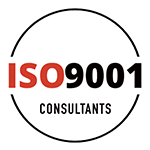Every business strives for operational excellence, aiming to become as efficient and effective as possible. This journey involves refining processes, engaging employees, and focusing on customer satisfaction. Operational excellence isn’t just a goal; it’s a continuous pursuit that helps businesses stay competitive and grow organically.
ISO 9001 serves as a powerful tool in this journey. It offers a structured framework that aligns closely with the principles of operational excellence. This standard helps organisations set clear quality objectives, streamline processes, and ensure consistent service delivery. By implementing ISO 9001, businesses can significantly enhance their operational performance and offer better value to their customers.
The principles of ISO 9001 foster an environment where employees are engaged and motivated to contribute to quality improvements. Leadership plays a critical role in this, guiding the organisation towards strategic goals while maintaining a focus on quality. Through ISO 9001, companies not only improve their day-to-day operations but also lay the groundwork for sustainable success.
Understanding Operational Excellence and ISO 9001
Operational excellence means running a business in the best possible way. It involves making sure every part of a company works efficiently and effectively. Businesses aim for this to minimise waste, reduce costs, and deliver high-quality products or services to their customers. Achieving operational excellence is vital as it helps build stronger customer relationships and enhances competitiveness.
ISO 9001 plays a significant role in reaching operational excellence. This standard provides guidelines for setting up a quality management system that focuses on continuous improvement and customer satisfaction. By adopting ISO 9001, businesses can create a strong foundation for efficient operations. The standard emphasises the importance of leadership involvement, planning, support, and evaluation.
ISO 9001 encourages a process approach, where organisations view their activities as linked processes. This perspective helps in understanding how different operations interact, aiming for smoother workflows. Moreover, having a strong customer focus aligns business objectives with customer needs, ensuring that the products and services delivered meet or exceed expectations. Through these principles, ISO 9001 guides businesses towards achieving operational excellence, improving reliability, and boosting customer trust.
Key ISO 9001 Components Driving Excellence
ISO 9001 has several core components that drive operational excellence by refining and optimising processes. These elements focus on meeting quality objectives and ensuring that businesses run smoothly.
1. Customer Focus: Understanding and meeting customer needs is at the heart of ISO 9001. By prioritising customer satisfaction, businesses can ensure loyalty and repeat business.
2. Leadership: Strong leadership provides direction and sets a quality-focused culture. Leaders within the organisation must demonstrate commitment to the quality management system.
3. Engagement of People: Involving employees in quality improvement processes enhances morale and productivity. Engaged employees are more likely to contribute to innovative solutions.
4. Process Approach: Viewing activities as interrelated processes helps in achieving consistent and predictable outcomes. This approach aids in identifying efficiencies and areas for improvement.
5. Improvement: Continuous improvement is vital. Using data and feedback to enhance processes ensures businesses remain competitive and meet changing customer needs.
6. Evidence-Based Decision Making: Decisions should rely on accurate data and analysis, enabling businesses to address issues effectively and make informed choices.
7. Relationship Management: Managing relationships with suppliers and partners ensures they align with company goals, enhancing collaboration and resource optimisation.
Implementing ISO 9001 for Improved Operations
Integrating ISO 9001 into daily operations requires thoughtful planning and commitment. The process begins with a clear understanding of the ISO 9001 standards and how they align with the organisation’s goals. Here are practical steps to implement these standards effectively:
1. Gap Analysis: Assess current processes to identify gaps between existing practices and ISO 9001 requirements. This helps in prioritising areas needing improvement.
2. Training and Awareness: Educate employees about the importance of ISO 9001 and their role within the quality management system. Well-informed employees can contribute better to meeting quality objectives.
3. Process Documentation: Clearly document processes and procedures. This ensures consistency and helps employees understand their responsibilities.
4. Set Clear Objectives: Define quality objectives that align with business goals. These objectives should be measurable and achievable, serving as benchmarks for success.
5. Leadership Involvement: Leadership must demonstrate commitment by allocating resources and supporting the implementation process. This sets a standard for the organisation and encourages employee engagement.
6. Regular Audits: Conduct regular internal audits to ensure compliance with ISO 9001 standards and identify areas for improvement.
Measuring Success and Continuous Improvement
To evaluate the success of ISO 9001 in achieving operational excellence, it is essential to measure performance against defined objectives. Monitoring and analysis of data play key roles in recognising achievements and areas needing further optimisation.
1. Key Performance Indicators (KPIs): Establish KPIs related to quality objectives. These indicators help track progress and performance over time.
2. Regular Reviews: Conduct management reviews to assess the effectiveness of the quality management system. These reviews should involve examining audit results, customer feedback, and performance data.
3. Customer Feedback: Regularly gather feedback from customers to identify satisfaction levels and areas for enhancement. Positive feedback indicates alignment with customer expectations, while negative feedback provides insights for improvement.
4. Continuous Data Collection: Use performance data to drive decisions. By continually collecting and analysing data, businesses can make informed adjustments to increase efficiency and quality.
5. Improvement Actions: Implement corrective and preventive actions based on audit results and feedback. This ensures that the organisation learns from past mistakes and takes proactive steps towards better practices.
Conclusion
ISO 9001 is an invaluable tool for achieving operational excellence by providing a structured approach to managing quality. Through its implementation, businesses can enhance process efficiencies, engage their workforce, and consistently meet customer expectations. As a living standard, continuous monitoring and improvement are required to adapt to the ever-evolving business landscape.
To elevate your operations through ISO 9001, trust the expertise of ISO 9001 Consultants. We provide guidance and support tailored to your needs, helping you unlock new efficiencies and improve quality management practices. Get in touch with our team to begin your journey towards operational excellence today.







